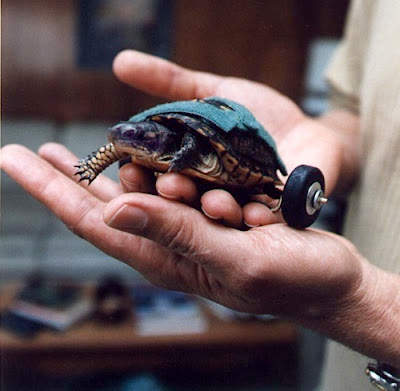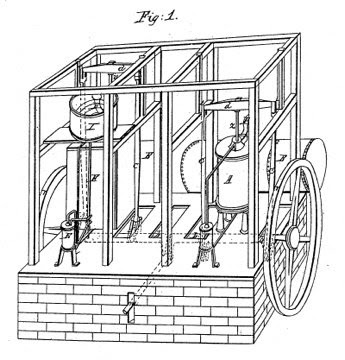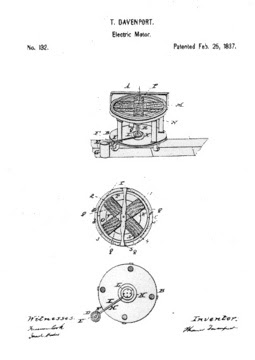1. Penicillin
Everybody knows the story – or at least, should – the brilliant yet notoriously absent-minded biologist Sir Alexander Fleming was researching a strain of bacteria called staphylococci. Upon returning from holiday one time in 1928, he noticed that one of the glass culture dishes he had accidentally left out had become contaminated with a fungus, and so threw it away. It wasn’t until later that he noticed that the staphylococcus bacteria seemed unable to grow in the area surrounding the fungal mould.
Fleming didn’t even hold out much hope for his discovery: it wasn’t given much attention when he published his findings the following year, it was difficult to cultivate, and it was slow-acting – it wasn’t until 1945 after further research by several other scientists that penicillin was able to be produced on an industrial scale, changing the way doctors treated bacterial infections forever.
2. The Microwave
In 1945 Percy Lebaron Spencer, an American engineer and inventor, was busy working on manufacturing magnetrons, the devices used to produce the microwave radio signals that were integral to early radar use. Radar was an incredibly important innovation during the time of war, but microwave cooking was a purely accidental discovery.
While standing by a functioning magnetron, Spencer noticed that the chocolate bar in his pocket had melted. His keen mind soon figured out that it was the microwaves that had caused it, and later experimented with popcorn kernels and eventually, an egg, which (as we all could have told him from mischievous childhood ‘experiments’), exploded.
The first microwave oven weighed about 750lbs and was about the size of a fridge.
3. Ice Cream Cones
This story is a perfect example of serendipity, and a single chance encounter leading to worldwide repercussions. It’s also rather sweet.
Before 1904, ice cream was served on dishes. It wasn’t until the World’s Fair of that year, held in St Louis, Missouri, that two seemingly unrelated foodstuffs became inexorably linked together.
At this particularly sweltering 1904 World’s Fair, a stall selling ice cream was doing such good business that they were quickly running out of dishes. The neighboring stall wasn’t doing so well, selling Zalabia – a kind of wafer thin waffle from Persia – and the stall owner came up with the idea of rolling them into cone shapes and popping the ice cream on top. Thus the ice cream cone was born – and it doesn’t look like dying out any time soon.
4. Champagne
While many know that Dom Pierre Pérignon is credited for the invention of champagne, it was not the 17th century Benedictine monk’s intention to make a wine with bubbles in it – in fact, he had spent years trying to prevent just that, as bubbly wine was considered a sure sign of poor winemaking.
Pérignon’s original wish was to cater for the French court’s preference for white wine. Since black grapes were easier to grow in the Champagne region, he invented a way of pressing white juice from them. But since Champagne’s climate was relatively cold, the wine had to be fermented over two seasons, spending the second year in the bottle. This produced a wine loaded with bubbles of carbon dioxide, which Pérignon tried but failed to eradicate. Happily, the new wine was a big hit with the aristocratic crowds in both the French and English courts.
5. Post-It Notes
The invention of the humble Post-It Note was an accidental collaboration between second-rate science and a frustrated church-goer. In 1970, Spencer Silver, a researcher for the large American corporation 3M, had been trying to formulate a strong adhesive, but ended up only managing to create a very weak glue that could be removed almost effortlessly. He promoted his invention within 3M, but nobody took any notice.
4 years later, Arthur Fry, a 3M colleague and member of his church choir, was irritated by the fact that the slips of paper he placed in his hymnal to mark the pages would usually fall out when the book was opened. One service, he recalled the work of Spencer Silver, leading to an epiphany – the church being a good a place as any to have one, I suppose – and later applied some of Silver’s weak yet non-damaging adhesive to his bookmarks. He found that the little sticky markers worked perfectly, and sold the idea to 3M. Trial marketing began in 1977, and today you’d find it hard to imagine life without them.
6. Potato chips/crisps
In 1853, in a restaurant in Saratoga, New York, a particularly fussy diner (railway magnate Cornelius Vanderbilt) repeatedly refused to eat the fries he had been served with his meal, complaining that they were too thick and too soggy. After he had sent back several plates of increasingly thinly-cut fries, the chef George Crum decided to get his own back by frying wafer-thin slices of potato in grease and sending them out.
Vanderbilt initially protested that the chef’s latest efforts were too thin to be picked up with a fork, but upon trying a few, the chips were an instant hit, and soon everybody in the restaurant wanted a serving. This led to the new recipe appearing on the menu as “Saratoga Chips”, before later being sold all over the world.
7. The Slinky
What walks down stairs, alone or in pairs, and makes a slinkity sound? Well, originally it was just a spring falling off a desk. To be more precise, it was the desk belonging to marine engineer Richard James, who sometime in 1940 noticed that when the spring fell, it stumbled and tumbled across the floor for a while before laying to rest. After a few prototypes, the Slinky was ready to be introduced to toy stores in 1948, where it became one of the most popular and iconic toys of all time.
James’ wife Betty was the one who came up with the name “Slinky”, and has been CEO of the company since 1960. Over 250 million Slinkies have been sold worldwide, and they were even used as mobile radio antennae during the Vietnam war.
8. The Pacemaker
Like penicillin, here is another accidental invention that continues to save lives to this day. American engineer Wilson Greatbatch was working on a gadget that recorded irregular heartbeats, when he inserted the wrong type of resistor into his invention. The circuit pulsed, then was quiet, then pulsed again, prompting Greatbatch to compare this reaction with the human heart and work on the world’s first implantable cardiac pacemaker.
Before the implantable version was used on humans from 1960 onwards, pacemakers had been based on the external model invented by Paul Zoll in 1952. These were about the size of a television and dealt out considerable jolts of electricity into the patient’s body, which often caused the skin to burn. Greatbatch also went on to devise a lithium-iodide battery cell to power his pacemaker.
9. Superglue
More sticky stuff, though this one was famous for its high adhesive value, unlike Silver’s Post-It Notes. Superglue came into being in 1942 when Dr Harry Coover was trying to isolate a clear plastic to make precision gun sights for handheld weaponry. For a while he was working with chemicals known as cyanoacrylates, which they soon realized polymerized on contact with moisture, causing all the test materials to bond together. It was obvious that these wouldn’t work, so research moved on.
6 years later, Coover was working in a Tennessee chemical plant and realized the potential of the substance when they were testing the heat resistance of cyanoacrylates, recognizing that the adhesives required neither heat nor pressure to form a strong bond. Thus, after a certain amount of commercial refinement, Superglue (or “Alcohol-Catalyzed Cyanoacrylate Adhesive Composition”, to give it its full name) was born.
It was later used for treating injured soldiers in Vietnam – the adhesive could be sprayed on open wounds, stemming bleeding and allowing easier transportation of soldiers; adding a delicious layer of irony to the story in that a discovery made during an effort to improve the killing potential of guns ended up saving countless lives.








